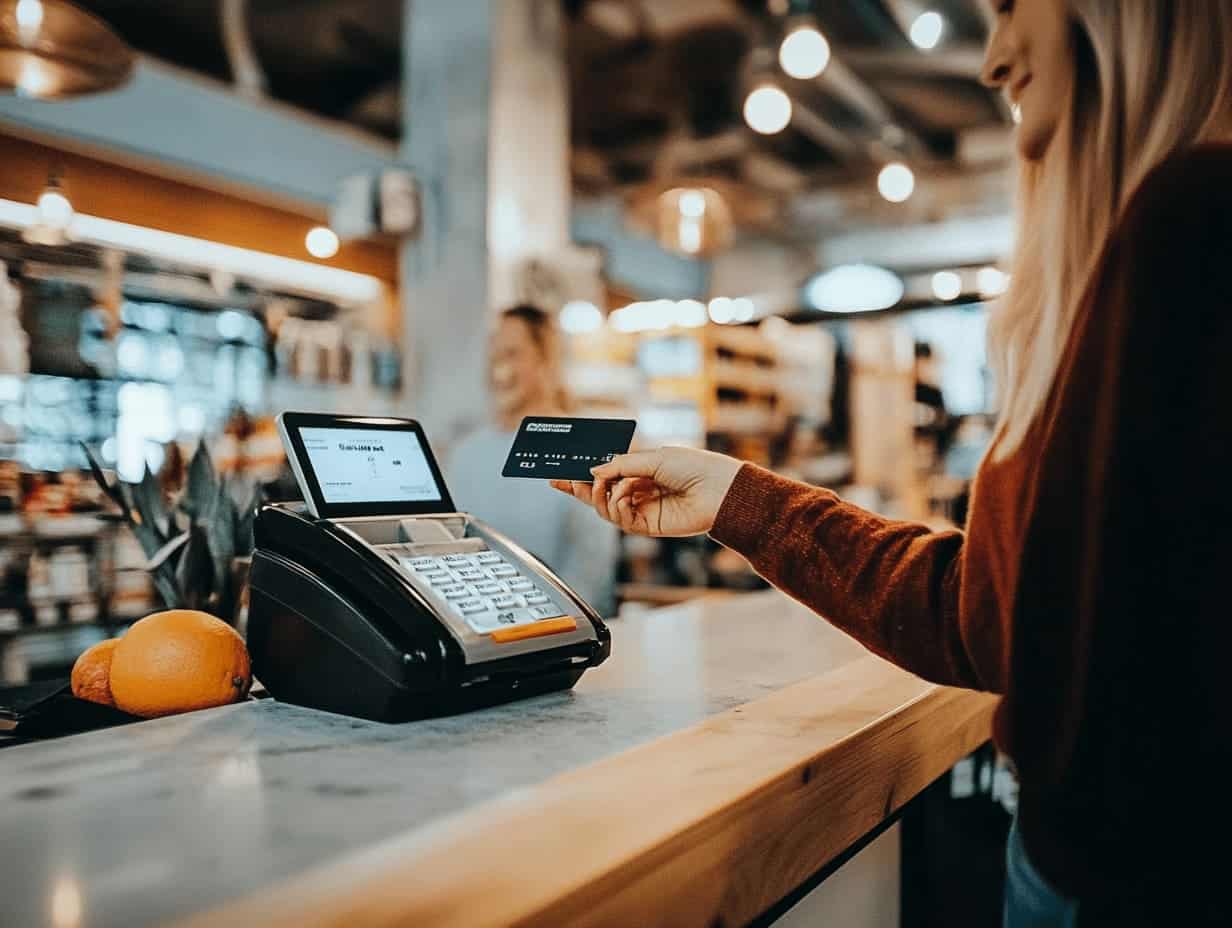Running a convenience store is a race against the clock: coffee run at 7 am, a lottery line during lunchtime, an energy drink surge before the commute. When a convenience store’s point-of-sale system is slow to scan or freezes, customers often walk away. And when they leave, they may not come back. The ideal convenience store POS system must scan, address age verification without embarrassment, ensure fuel and in-store sales are reconciled, and quickly close out for an even longer day[1]. In 2025, it sounds easier said than done. Keep lines short. Keep shrinkage at a minimum. Keep everything digitized and accountable from pump to register.
Why Convenience Store POS Is Different
C stores live on small transactions with high velocity. You’re selling fuel, beverages, hot food, tobacco, possibly beer/wine, and perhaps money orders and prepaid options. Each has its unique rules, taxes, and age checkpoints. A POS system for convenience store users should act like a pit crew; quick PLU keys for hot items, barcodes for the rest, and a workflow that’s efficient so that a customer buying a six-pack and scratching off doesn’t delay the cashier every single time.
The Challenge of a Busy C-Store Register
There is a lot going on in three square feet. Age-restricted items require reliable prompts. Fuel changes must adjust at the register in real-time. Lottery, prepaid options and EBT offer different steps each. Shifts change with cash counts, safe drops and deposit slips. If your pos system for convenience stores cannot account for it all, you end up with long lines, disappearing cash and inventory that doesn’t match what is on the shelves. Honestly, it’s stressful. It should tame the chaos; it shouldn’t add to it.
How Your Merchant Account, Hardware and Setup Come Into Play
Your merchant account impacts approval rates and fees. Your hardware impacts speed and reliability. Your setup determines if staff can efficiently work through a mixed basket without thinking. Review encrypted chip readers, durable scanners and receipt printers that don’t jam. Ensure the convenience store point-of-sale system seamlessly connects fuel purchases, in-store sales, and age verification[2][3]. Simple, predictable and durable.
Why Customer Experience Could Make Or Break Your Day
People frequent convenience stores because it’s easy—a quick stop in and out, with friendly acknowledgment, and they have the correct snack item they wanted. If you’re shopping and the checkout process feels frustrating or slow, trust that they’ll remember next time they want to buy an item inside another store down the block, and they’ll walk away from your location, never to return. Clean receipts, easy returns and an “I’ll make this right” attitude prevent patrons from calling their banks instead of having you clear things up right away; better customer experience isn’t fluff—it accounts for revenue generation or risk.
The Top Six Features to Focus On When Seeking Convenience Store POS
Quick Checkout With Wallets Galore
Tap to pay and chip should be instantaneous; contactless readers should go where customers naturally hold their phone. Hotkeys should be programmed for coffee size purchases, breakfast sandwiches and top-selling items. Seconds saved on all transactions equals real dollar savings on busy days.
Inventory and Shrink Control
Scan everything with easy UPCs and maintain PLU's for fresh items; track deliveries from vendors, case breaks and specials; cycle count high theft items and alert when shrink exceeds a given percentage. If inventory is always "off," margins will slowly bleed dry.
Age Verification Done Right
Alcohol and tobacco require frictionless selling every single time. Your convenience store point of sale should prompt each time, scan ID where legal, log approval time in the system as well as for younger employees to know what's up without fail.
Fuel Integration Forecourt-Friendly
Pumps, price signs, tank levels, carwashes—all of it. Price adjustments will need to bump from back-office systems to pump and register simultaneously. Prepay versus post-pay needs to be obvious with clear reconciliation so gas sales reconcile to cash deposits—no late-night math necessary.
Cash Management and Loss Prevention
Drawer limits, blind counts at shift change, safe drop counts and no-sale alerts. Tie refund permissions/voids to their roles. If possible, reconcile with timestamps from cameras to exceptions at the register. It's amazing how quickly shrink disappears once there are protocols in place.
Reporting, Loyalty and Multi-Store Operations
Daily P&L that makes sense; mixed reports by hour and category; loyalty systems that promote a second look (such as a combo pack with coffee and pastry) without confusing staff; if more than one store exists, facilitate pricing options and promotions once instead of six times.
What the Future of Convenience Store Point of Sale Looks Like
Look for more phone-as-reader access, small self-checkout kiosks for surge rushes, and scan-and-go options for loyal patrons. Tap usage continues to grow year after year; age verification needs to become more sophisticated yet consistent; the back office must improve its forecasting of orders to keep them stocked without overstocking shelves[4]. The best systems should feel invisible—they operate seamlessly, allowing your team to focus on guests.
FAQs
Q: What features are must-haves for a convenience store POS system?
A: Quick scanning capabilities and tap-to-pay functionality; seamless age prompts; proper fuel integration; cash management best practices. Also, simple PLU access; drawer management; daily reports that reconcile without detective work; if you manage lottery or EBT transactions—confirm that flow is supported in testing at real speed—not just in demos[5].
Q: How can POS systems for convenience stores reduce shrinkage?
A: Track high-shrink categories closely; manager approval required for voids/no-sales; blind counts at shift change; tie timestamp from cameras to exceptions when possible; inventory compliance matters—schedule quick cycle counts to measure delivered cases versus scanned-out items; correct reports will highlight which hours/items drift from expected margin.
Q: What do I need to understand about age verification in convenience store point of sale?
A: Your POS should prompt consistently and either capture an ID scan or record confirmation depending on local law; train on edge cases (multiple age-restricted items in one transaction); save logs so you can prove the check was done if questions arise later.
Q: How do I assess fuel integration at the register?
A: Ask to see price change propagation live in a demo setting; prepay/post-pay/pump release/wash card should all be obvious as well as end-of-day reconciliation; confirm wet stock readings/pump totals/register totals align without manual edits—if you need price sign control—confirm it’s included.
Q: Which reports help a manager most?
A: Hourly sales mixes, voids/refunds by cashier; lottery/prepaid reconciliations; cash shortage or overage notes, as well as fuel vs inside margin mixed lists, as well as top ten candidates for shrink; bonus points for one-page close reports confirming deposits with anything out of whack needing flagging immediately.
Sources
- NACS, The Association for Convenience and Fuel Retailing. “Technology and Operations Research.” Accessed October 2025.
- PCI Security Standards Council. “PCI DSS Resources and Guidance for Merchants.” Accessed October 2025.
- EMVCo. “Contactless Specifications Overview.” Accessed October 2025.
- U.S. FDA. “Retail Sales of Tobacco Products, Compliance Training.” Accessed October 2025.
- USDA Food and Nutrition Service. “SNAP Retailer Requirements.” Accessed October 2025.











